- Publications:
- Newsletter:
- How-To Tutorials:
- Consumer Guides:
- Related:

Image by Robert Ubell
Publishers:
Accurate Building Inspectors ©
Division of Ubell Enterprises, Inc.
1860 Bath Avenue
Brooklyn, NY 11214
voice – [718] 265.8191
toll free voice – [800] 640.8285
fax – [718] 449.7190
Lawrence J. Ubell *
- President
Alvin Ubell **
- Founder, Vice President
Matthew Barnett *
- Senior Inspector
Estelle R. Ubell
- Sec. Treasurer
Emily Hoffman
- Editor & Broadcaster, WNYC & WQXR
Contributors:
HON. JULES L. SPODEK, (RET)
Robert H. Wolff, Esq. of Rosenberg,
Minc, Falkoff
& Wolff, LLP
Ari Saltz, of GFI Mortgage Bankers, Inc.
Stanley Turkel, MHS, ISHC
Bertrum Herman, Esq.
Howard Kurtzberg, Esq.
* Licensed in: New York - New Jersey
** Licensed in: NJ
Contribute:
If there is a subject that you would like to see discussed or an article that you would like to contribute to be featured
in The Gotham City Inspector©, please forward your comments to:
Letters to the Editor
Media Notice: The publishers, grant reprint permission of all articles in the Gotham City Inspector© Newsletter, provided that appropriate written recognition is given to the authors and “The Gotham City Inspector©”. For online reprints, please also include an HTML link to The Gotham City Inspector©: www.accuratebuilding.com
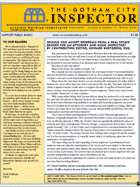
The Gotham City Inspector©
November 2005, Vol. 3, No. 1

![]() Gotham City Inspector Newsletter
Gotham City Inspector Newsletter
Fall Issue: Headlines
- • New York Puts Energy Hungry Appliances On A Diet
- • Resolving Disputes In The 21st Century
- • Energy Hint #43: Light Bulbs
- • It's A Bird, It's A Plane, It's PV In Coney
- • Houdini & Fire Safety
- • Hurricane Relief
Living in New York
City Gets Its First Solar Subway
When you think of the subway, you don't usually think about solar energy. After all, most of the time, the trains run underground. But one station in Brooklyn has taken advantage of its above ground status to become one of the most environmentally friendly mass transportation sites ever built in the United States.
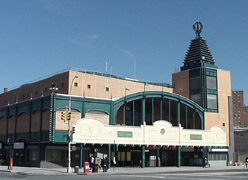
The newly reconstructed, subway station at Stillwell Avenue, Coney Island, Brooklyn is the city's first solar-powered train terminal. The station's 76,000-square foot state-of-the-art solar roof is expected to contribute approximately 250,000-kilowatt hours a year to its nontraction power needs.
The new arched solar roof, consisting of 2,730 building integrated photovoltaic panels covers the full width of the station and doubles as a canopy to protect riders from inclement weather. The solar panels consist of thin films of amorphous silicon laminated onto glass, and are themselves the largest thin-film solar panels in the world: each panel measures 5 feet by 20 feet.
The changes at the Stillwell Avenue Terminal are part of the transit system's effort to meet a New York State executive order on green buildings and vehicles.
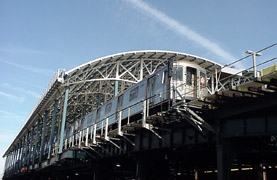
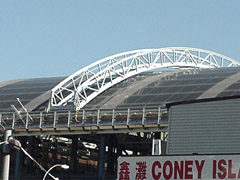
Attorney's Corner
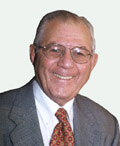
Resolving Disputes In The Twenty First Century
by Hon. Jules L. Spodek (Ret)
The Trial Courts
Since the founding of this country, courts have helped citizens resolve disputes that they were unable to resolve themselves. The method used was based upon British common law and adopted in this country. The laws worked quite well in the simple life of colonial times and in early America.
But as our society became more complex and sophisticated, the courts were required to adapt to the changes. So many new types of lawsuits were established that at the end of World War II, the courts were overwhelmed by the amount of civil litigation they had to deal with. By the end of the twentieth century, the courts had responded by developing new methods to meet the trend of growth.
The most formal method of dispute resolution is the court system. Strict rules of evidence apply. Formal discovery takes place. The trial itself makes use of all kinds of expert testimony and technical exhibits. Juries are utilized. Various types of motions are available and useful discovery takes place. When a verdict is reached, various motions and appeals are available to correct any errors made during the trial. From the time lawsuit papers are served until the case reaches trial can take anywhere from a year to four or five years to verdict! The trial itself can take many days with great expense for attorney's fees and expert testimony when needed.
Arbitration
The process of arbitration, which is usually binding, is not as formal as the process used by the trial courts. It is, however, more formal than mediation (see below). A hearing can usually be arranged in less than a month. While rules of evidence are utilized, they are greatly relaxed. Often the only witnesses are the parties themselves. One of the advantages of arbitration is the savings of not using expert testimony and the resultant reduced attorneys' fees. Rather, experts' reports may be used, as well as various types of records, reports and medical film exhibits.
The parties can agree that the neutral arbitrator can make a definitive award or no award at all. In recent years, a “high/low” means of dispute resolution has been used. That's when the parties themselves, or with the help of the arbitrator, set the parameters of the resulting arbitration. That assures that the plaintiff will receive at least an amount that would be better than losing completely, if the defense prevails. If the defense loses, it will not be as devastating as a runaway verdict or, where a policy of insurance is involved, a resolution that will be less than the limits of the policy.
Unless difficult and complicated issues are involved, the hearing is usually resolved in one relatively short session. There are no minutes taken of the hearing that assures confidentiality not available in a plenary trial. There is no appeal from the determination, so the matter is concluded swiftly and with finality.
Mediation
The mediation process is the simplest and most informal procedure of all. Except for criminal matters, every type of dispute may be mediated. The entire process is non-binding. Examples of mediated issues are: employment, libel and slander, product liability, intellectual property, professional malpractice, breach of contract, real estate disputes, and sexual harassment. No testimony is taken. No rules of evidence are applicable. The litigants themselves are not usually present in the room when the mediation is taking place, but are nearby or available by telephone.
There is a presentation and questioning process. All issues of liability and damages are perused with all sides present. Then, the mediator will usually speak privately and separately with each side, trying to convince them the weaknesses of their case or the strengths of the opponent's. The mediator may impart his view and opinion, though usually privately.
The overwhelming majority of cases going to mediation are settled. This can all be accomplished within a relatively short span of time, with great savings in cost and time.
It is of prime importance that each side must trust the mediator. Each side must understand that the mediator has a good understanding of the issues of both liability and damages in order to conclude a successful mediation.
Summary Jury Trials
During the past several years, in New York State, starting in the Buffalo area and migrating now to New York City and the surrounding counties, a new form of dispute resolution emerged: the summary jury trial.
With the cooperation of the court system, an actual trial is conducted with the use of jurors from the normal jury pool in the county where the summary jury trial is to take place. An abbreviated jury selection takes place with each side limited to two challenges and the process limited to fifteen minutes for each side. A brief opening charge is given to the jury and opening statements are limited to ten or fifteen minutes for each side. No minutes are taken and nothing said during the trial may be used at a later proceeding. Summations are limited to fifteen minutes. Each side is permitted to have only two witnesses who are examined both under direct and cross-examination. All reports are received in evidence without formal authentication. The Judge or Judicial Hearing Officer gives a short charge and the jury then deliberates1. A verdict is reached.
All is usually completed within one day and at minimum expense. The results are non binding unless the parties agree otherwise. If the parties agree beforehand to have the results binding, usually with the use of a high/low arrangement that the jury is unaware of, there is no appeal and judgment is absolute.
If the results are unsatisfactory to either side, either party can opt to go to regular trial. Summary jury trials have been successfully utilized for all types of cases. It is worth repeating that rarely have any of the cases going to summary jury trial ever gone to verdict.
Jules L. Spodek is retired from the bench after 30 years, starting in the Civil Court and spending his last 24 years in the NY State Supreme Court. He has tried all types of cases including criminal, commercial, real estate and tort cases such as cases of lead poisoning and medical and legal malpractice. Judge Spodek currently is a Judicial Hearing Officer (JHO) in Kings County where he supervises other JHOs. He is also involved in private mediation and arbitration on a variety of issues.
1Judicial Hearing Officers, usually retired Judges, are utilized as are sitting Judges.
Energy Wise, Part I
An Idea in a Light Bulb
Lighting accounts for about 15% of the average home's electric use. New screw-in compact fluorescent bulbs can replace the incandescent bulbs most of us use. Fluorescent bulbs are more expensive initially, but they last 10 times longer and use 75% less electricity. Therefore, two 100-watt incandescent bulbs burning five hours per day for 30 days will use 30,000 watts or 30-kilo watt-hours (kWh) of electricity. Two 29- watt fluorescent bulbs that would produce the same amount of lighting could reduce electric usage to 8.7 kWh per month, which would save about $40.00 per year in electricity costs.
Energy Wise, Part II
Governor a Fan of Energy Efficiency
The government is getting on the energy saving bandwagon with legislation that will not only encourage New Yorkers to become more aware of energy conservation, but will also reward them for doing so.
This past July, New York Governor George Pataki signed a bill that set energy efficiency standards for household appliances and electronic equipment that are not covered by federal efficiency standards. This includes ceiling fans and ceiling light kits; furnace air handlers; commercial washing machines; commercial refrigerators, freezers, and icemakers; touchier lighting fixtures; unit heaters; reflector lamps; large air-conditioning equipment; and other commercial and household items. The state expects these new standards to save up to 2,096 gigwatt-hours of electricity per year. That's an amount equal to the energy required to power 350,000 homes and means the state's consumers will save $284 million annually through lower energy bills.
With the Appliance and Equipment Energy Efficiency Standards Act of 2005, New York joins Arizona, California, Maryland, and New Jersey who have already adopted similar efficiency standards.
Tax Happy PV
One alternative to our dependence on fossil fuel is solar (photo voltaic, or PV) energy. More and more, we're seeing support for this clean and reliable option.
For example, federal and state governments recently joined together to offer additional tax incentives to help promote the installation of Solar Electric equipment.
Effective September 1, 2005, New York State eliminated the State portion of the sales tax on PV equipment purchases.
New York State currently offers a tax credit of up to 25% of the net costs for the installation of a PV system. The current incentive has a cap of $3,750.
The Federal government is offering residential customers (from 1/1/06 to 12/31/07) up to a 30% tax credit (with a cap of $2,000) for PV and business customers are being offered (from 1/1/06 to 12/31/07) up to a 30% tax credit (with no cap) for PV.
Inspector's Diary
The Great Holiday Escape: Houdini & Fire Safety
The holiday season is coming and many homes will have menorahs with candles or evergreens with colored lights. Whatever your persuasion, fire is an equal opportunity hazard. It's important to use lights, candles and outlets safely, and to know your exit plan if there is a problem. Here are some suggestions:
1. Always unplug your tree lights before you go to bed or leave the house. Make sure your menorah is placed on a safe, fireproof surface.
2. Do not overload electrical outlets or circuits. Use heavyduty extension cords for air conditioners and other large appliances. Avoid overloading outlets by using power strips. Remember: anything that makes heat or cold draws a lot of electricity, including A/C, refrigerators, irons, toasters.
3. Codes require fire escapes to be free of encumbrances such as plants and barbecues. Also, an air conditioning unit may not be placed in the window used for egress to the fire escape. Fire escapes must be in good working order, which means the owner of a dwelling must repair any corrosion and repaint it with two contrasting colors. Also, the fire escape can have no missing sections (handrail, guardrail, treads, rungs and drop down ladder must be hung up and tightened).
4.Test your smoke detector twice a year to make sure it's operational. (Reminder: At daylight saving clock change, test the detector), Fall back, and Spring ahead!
5. Remove any double cylinder locks from your apartment entrance door (these locks need a key to open the door from the inside.) In case of a fire or other emergency you could be trapped inside if you need a key to get out and you can't find it.
6. Have a family fire drill once a year. Don't assume your loved ones know how to exit the home. Better safe than sorry.
Public Service Announcement
Hurricane Relief
Hurricanes Katrina and Rita may no longer be in the headlines, but the plight of those affected by the storms continues. The Gotham City Inspector reminds you to think about those less fortunate then yourself this coming holiday season. There are many legitimate organizations still offering hurricane relief.
Here are a few:
UNICEF www.unicefusa.org
AmeriCares www.AmeriCares.org
Save the Children www.SaveTheChildren.org
ASPCA www.aspca.org
“Helpful ideas at your finger tips!”
If you would like to receive the The Gotham City Inspector© newsletter, please email
your request and include your name, business name, business telephone and address.
E-mail: info@accuratebuilding.nyc
Copyright Ubell Enterprises, Inc. 2005 ©
Accurate Building Inspectors provides home inspection services throughout New York, NYC, Bronx, Brooklyn, Harlem, Long Island, Queens, Staten Island & New Jersey (NJ)





